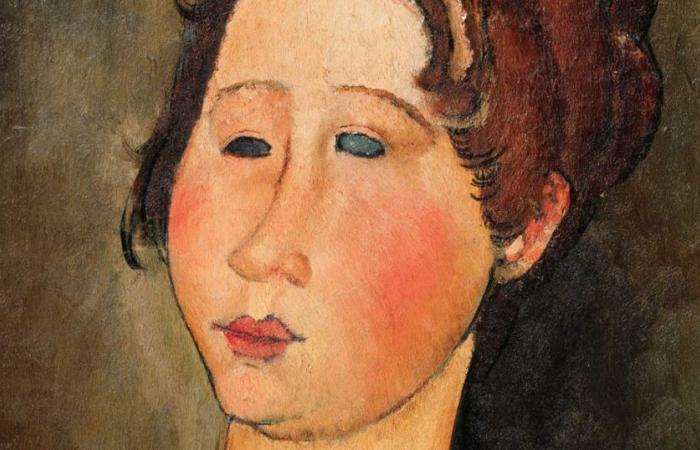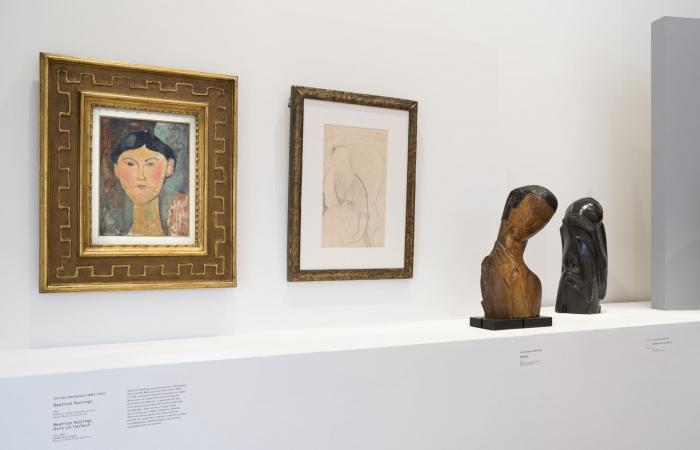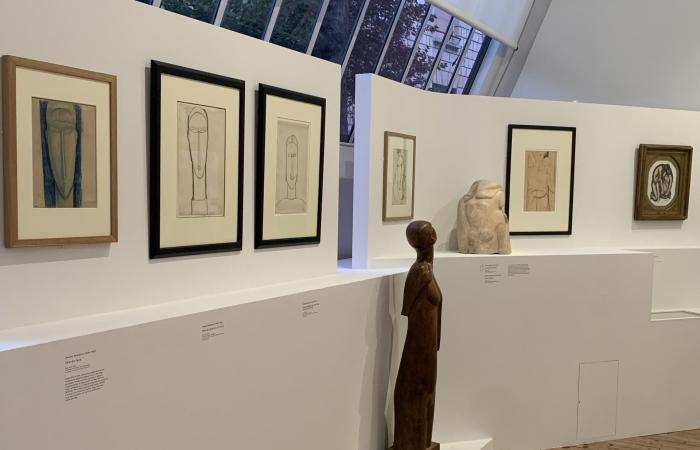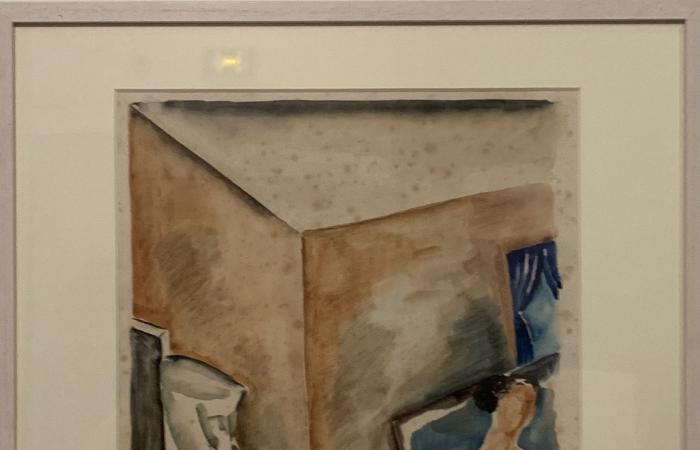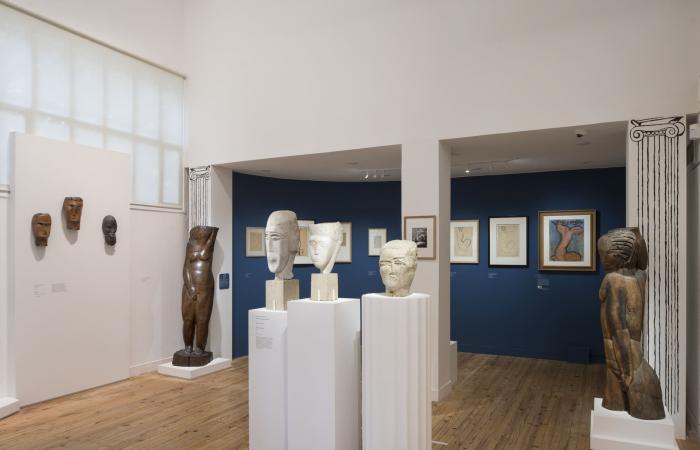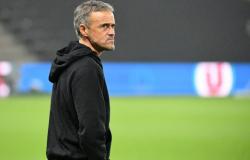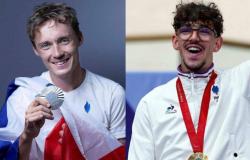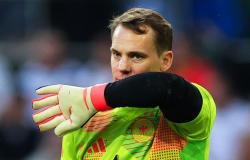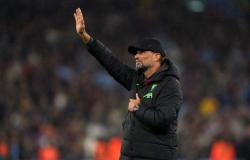1/6
A friendship in 90 works
Detail of La Bourguignonne (1918) by Amedeo Modigliani, presented in the exhibition “Modigliani-Zadkine, an interrupted friendship”, Zadkine museum, Paris, 2024 (©Guy Boyer).
Put together by Thierry Dufrêne and Cécile Champy-Vinas, the exhibition judiciously mixes 90 works by the two artists showing their points of convergence and their differences, then recalls the Montparnasse of the 1920s with Soutine, Max Jacob and Chana Orloff. A room explains the importance of Zadkine in the myth of Modi the cursed, after the premature death of the Italian artist. In his Memoirs, Zadkine describes it as “an authentic Montparnassian bud which did not last long”.
2/6
Formal similarities

Left: Beatrice Hastings (1915) by Amedeo Modigliani, presented in the exhibition “Modigliani-Zadkine, an interrupted friendship”, Zadkine museum, Paris, 2024 (©Guy Boyer).
Remarkable in its intensity, the first room demonstrates the links between the productions of the two friends. Here, for example, the tilted head of Zadkine's Ephebe responds to that tilted to the left of the portrait of Beatrice Hastings, the “beautiful Englishwoman” loved by Modigliani. A little further, the profiles sculpted or drawn by the two artists highlight their Egyptian inspiration, high cheekbones and almond-shaped eyes.
3/6
A difference in expressiveness
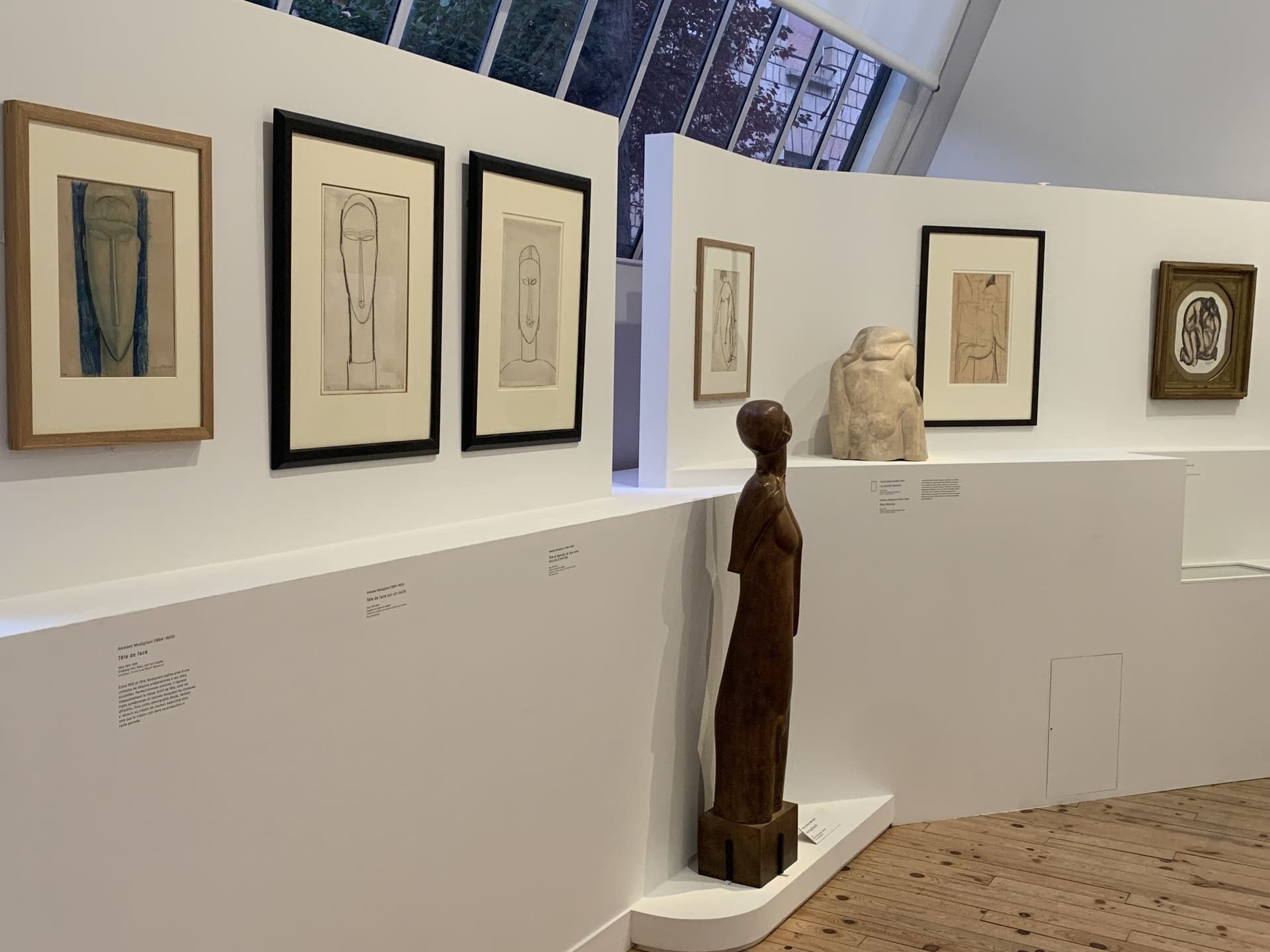
In the center: Hermaphrodite (1914) by Ossip Zadkine, presented in the exhibition “Modigliani-Zadkine, an interrupted friendship”, Zadkine museum, Paris, 2024 (©Guy Boyer).
If in Modigliani's work the elongated and stylized faces are imbued with softness, those of Zadkine, on the other hand, have a very different strength and severity. While Modigliani emphasizes the polish and shine of the stone (he abandoned sculpture in 1914 on the advice of his dealer Paul Guillaume), Zadkine cuts granites and wood whose grain he magnifies. On one side idealization, on the other expressiveness.
4/6
The breakdown of the war
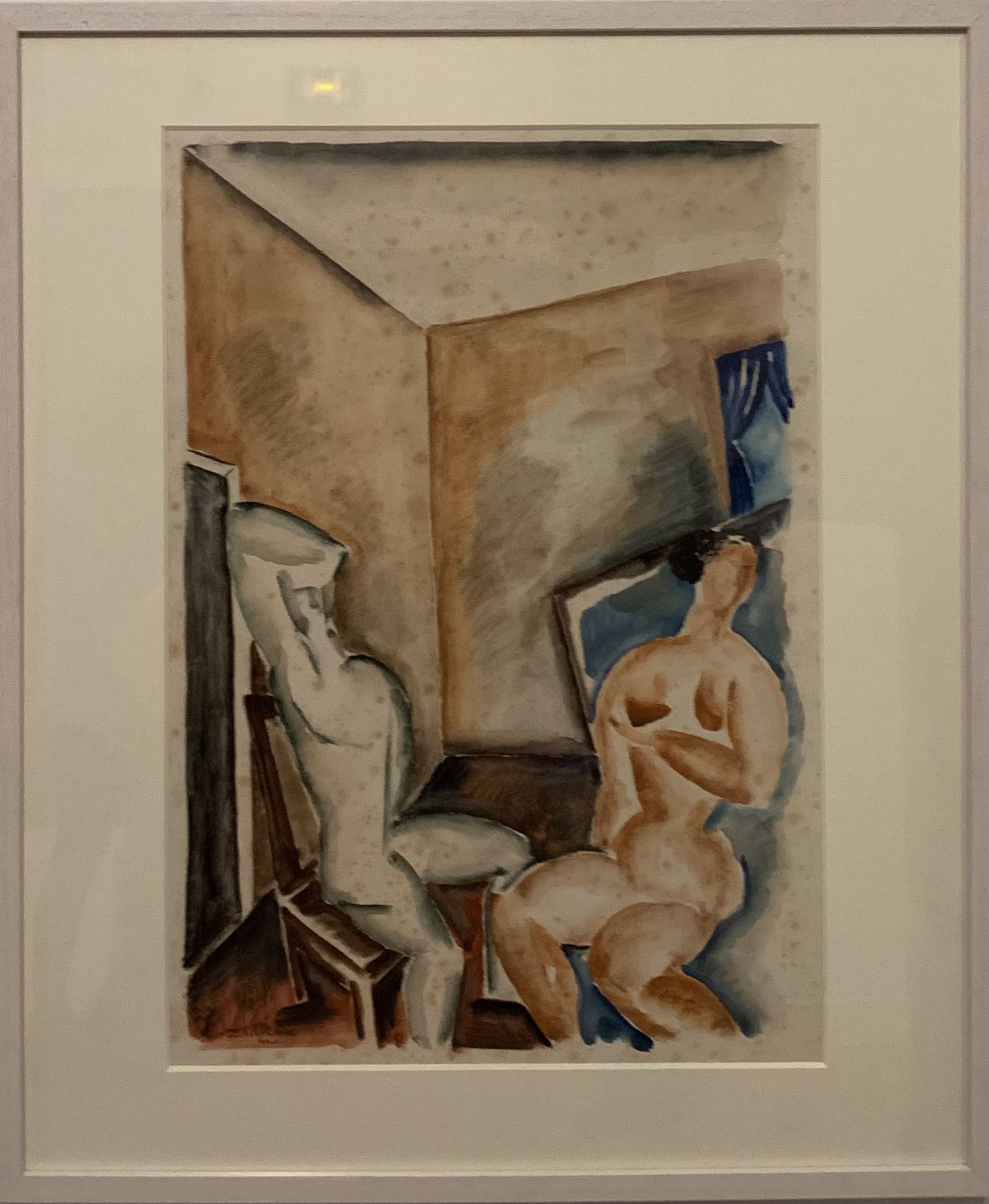
Two nudes (1920) by Ossip Zadkine, presented in the exhibition “Modigliani-Zadkine, an interrupted friendship”, Zadkine museum, Paris, 2024 (©Guy Boyer).
During the war, the two friends separated. Modigliani wants to join but is discharged because of his fragile health. Zadkine, although also a foreigner, goes to the front, is gassed in Champagne and must return to Paris. But in 1918 Modigliani and his companion, Jeanne Hébuterne, took refuge in the south of France while Zadkine left for Quercy. At the end of the war, their ties of friendship were severed and, at Modigliani's funeral two years later, Zadkine was not even present.
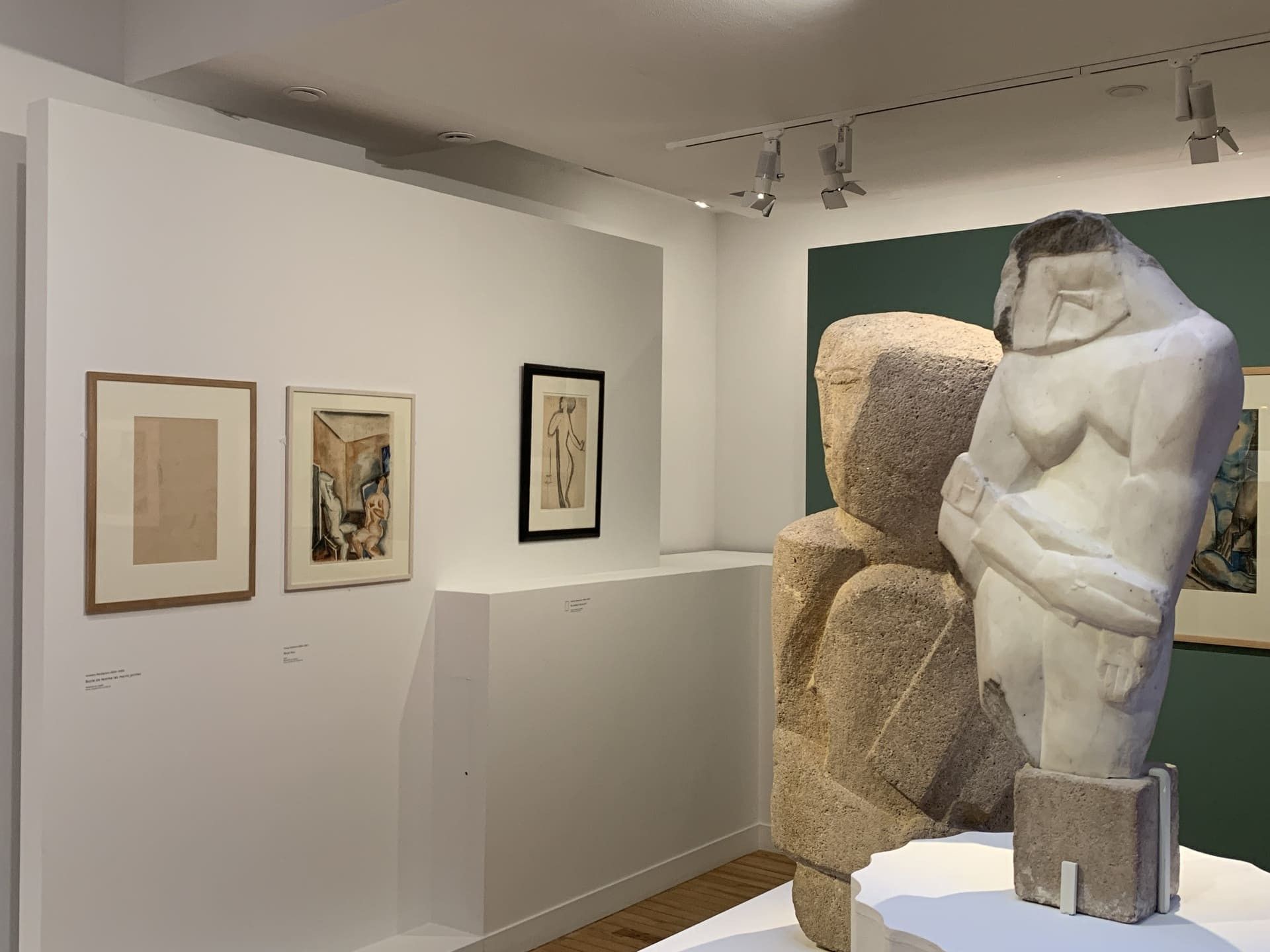
Right: Musician and Motherhood (1919) by Ossip Zadkine, presented in the exhibition “Modigliani-Zadkine, an interrupted friendship”, Zadkine museum, Paris, 2024 (©Guy Boyer).
To the serpentine line loved by Modigliani, Zadkine prefers cut sides and cubist facets. In these two sculptures representing female silhouettes, don't look for the sensuality of Modigliani's nudes. In Zadkine, the body becomes heavy, massive, muscular. The faces cut with a billhook conform to the block, even if it means taking an unnatural pose. Not to mention the baby from the Maternity Hospital who seems like a rag doll, stiff and pressed against the mother's belly.
6/6
Sculpture and architecture
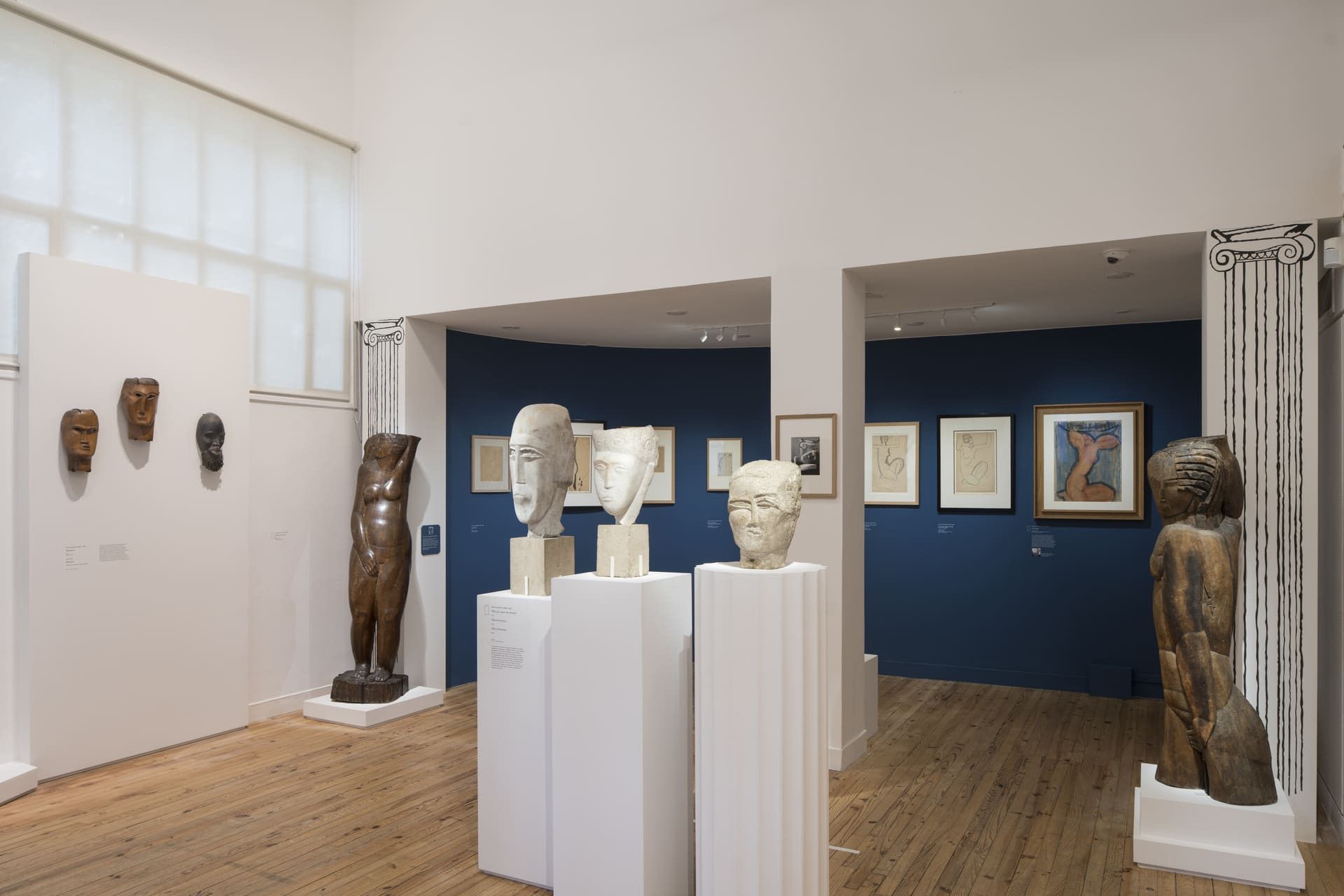
Right: Head of a Man (1918) by Ossip Zadkine, presented in the exhibition “Modigliani-Zadkine, an interrupted friendship”, Zadkine museum, Paris, 2024 (©Guy Boyer).
As early as 1912, Modigliani planned to present sculpted heads and caryatids, reminiscent of Indian or Cambodian art, in a temple in honor of Humanity. Zadkine, for his part, imagines a space to accommodate his works in three dimensions. Even if neither achieves his goals, drawings recall their common interest in the links between sculpture and architecture.

